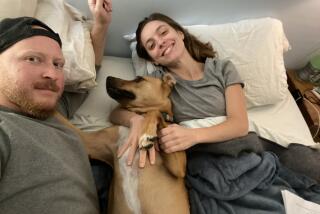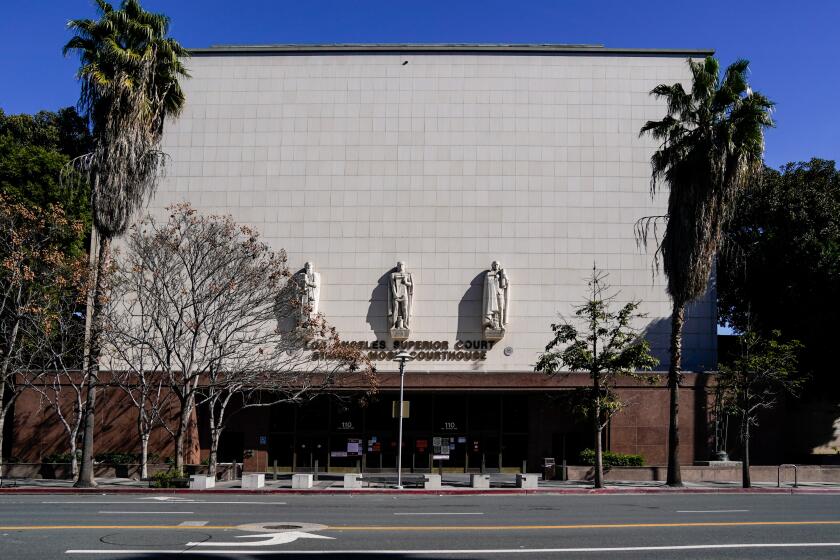Alan Trounson, California’s Dr. Stem Cell
In 2004, with President George W. Bush dead set against stem cell research, California just went ahead and did it. Voters made stem cell research a state constitutional right, and endorsed $3 billion in bond sales for 10 years to cement the deal. CIRM, the California Institute for Regenerative Medicine created under Proposition 71, has become a world center for stem cell research, and its president is Australian Alan Trounson, a pioneer in in vitro fertilization. As Proposition 71 approaches its 10-year anniversary, Trounson offers a prognosis.
It’s been almost 10 years since California funded what may be the world’s biggest stem cell research program. What are you up to?
We are working hard to get six or seven projects to clinical trials. We have more than 70 [total] programs moving [toward] clinical trials. It’s a lot of work to chaperon.
I’ll give you three examples: one, linking genetics, or genomics work, to stem cells, integrating the two. We’re going to create a center in California that will bring a lot of [genetics] studies and clinical work to a new level.
Secondly, we’ve set up a structure for banking the 3,000 cell lines from “induced pluripotent stem cells” that we turn into the equivalent of embryonic stem cells. We call them IPS cells. You take a skin cell or blood cell and convert it to the equivalent of an embryonic stem cell.
We’ve also taken samples from patients with complex diseases, and we’re banking these so scientists can “interrogate” these diseases — like heart disease, Alzheimer’s, blindness. We are targeting a range of conditions — autism, cerebral palsy — for which we have scant understanding of causes and major drivers. This is material for long-term research studies.
What we’re doing is meaningful. Somebody with cancer may have a better treatment. Parkinson’s patients might be in a clinical trial around 2016, 2017.
Are Californians getting enough bang for their buck?
I think we’re way ahead of what people predicted. Nevertheless, it takes a lot of time to do this. I think we’re hurrying carefully.
What else?
I’m intending to set up a network of stem cell clinics in California in the next couple of years, to make treatments available as clinical trials or as registered treatments for patients. I’m going to ask the [CIRM] board for about $70 million to get that set up. It will make California a go-to place for stem cell therapies. I want to make sure it’s part of our medical fabric.
An Oregon scientist reports that he has cloned human stem cell lines. Is Oregon doing something different from California?
The one thing that’s different is that we can’t compensate women adequately for donating eggs [as a source for creating a particular type of stem cell]. We can pay for the cost of drugs but not for the time and inconvenience. So that really does limit the number of women who would like to donate eggs to research, and that’s a handicap. I think it would be very useful to develop those cell lines.
The words “cloning” and “human” together set off alarm bells for some people.
[Under Proposition 71] we can’t do any reproductive cloning. We can’t do it and we shouldn’t do it — none of us wants to do that — but we would like to make those cell lines.
Is stem cell research highly competitive now, as it was in the 1980s, when you were beginning your work?
I don’t think it’s very competitive at all. There’s a little bit of competition between California and Harvard, but that will always be the case, I suspect. What’s important with [California’s] $3 billion is that it’s taken away a lot of the silliness of the competition — that you hold your data and you don’t show anyone and you wait until you [get it published] in a journal. In Australia, there’s very few funds for this kind of work and so it’s extremely competitive — you don’t know what others are doing even in the same laboratory. That’s not the case in California. People are collaborating, and that’s why we’re moving so fast because we work together. Scientists like to reach out to other scientists.
Could embryonic stem cells become unnecessary because other cells can be just as adaptable?
Maybe longer term. IPS cells have a very strong memory of what they were, whether they were a blood cell or a skin cell. Embryonic stem cells don’t. We have to find out whether IPS cells can [really adapt] or whether they’ll be poor relatives of the embryonic stem cell. Embryonic stem cells are being used for therapy, but IPS cells are being taken from patients with different diseases to interrogate those diseases. They’re not therapeutic at this time.
What surprises have you encountered?
I’m surprised all the time. That you can actually create a cure for HIV/AIDS with stem cells — that’s in clinical trials [in Denmark] now. That we found how to jump a skin cell to a pancreatic cell or a cardiac muscle cell. Every month comes a new surprise, tumbling toward totally different medicine that we’ll have in 30 or 40 years’ time.
This work is still controversial. Your team in Australia created the technique that has allowed 5 million in vitro fertilization babies to be born worldwide. But you were still called a “baby murderer.” Astrophysicists don’t get that kind of reaction.
In the surveys I’ve seen across the U.S., you get 70% or 80% of people very much in favor [of stem cell and IVF work]. If we get cures or treatments for some of these debilitating diseases, which is going to happen over the next four or five years, people will embrace what’s necessary to help a Parkinson’s patient or someone who’s got Type 1 diabetes. I’m not afraid of what some small sector feels outrage about. It’s their right, but it’s not the majority feeling.
Have you faced such personal criticism here?
Not really. Last year I was invited to the Vatican to present a paper, but when I sent in a summary of what I was going to say, they decided not to have it. They sent a check to the treasurer of California and the treasurer rang us up and said, “What the heck is this check from the Vatican for?” It was for the inconvenience!
Will California own patents from the research?
I expect there’s a lot of intellectual property with some of these [treatments] that will be really big returns for California. But it’ll take some time; the so-called blockbuster treatments will take 10 years or more. Gov. [Arnold] Schwarzenegger pointed a finger at me and said, “We’re going to give you the opportunity to deliver this, but understand it’s a 25-year gig.” The feds put $3.8 billion into the human genome project and the return from that, according to a study, is about $1,400 for every dollar.
The big story about CIRM last year was its conflict-of-interest protocols. What’s being done?
The [national] Institute of Medicine gave CIRM management strong positives. They had issues on conflict of interest. They felt if the [schools represented by] deans of medicine on the board were the recipient of CIRM [grants], they were potentially in a conflict of interest. The board decided to take away the [grant-making] vote for those [members, at least temporarily]. They also had a view that if the patient advocates [on the board] were strongly advocating for [research for] a disease, that was another kind of conflict. They [changed] some patient advocate roles in some grant selection process. I didn’t see this as a problematic issue, but from the point of view of the Institute of Medicine, it didn’t look right, and I can understand that. Much has been done to correct that.
You and your wife got married so that she could come here and work.
We didn’t really feel it was necessary; we’d been together 20 years and have two lovely boys, but she couldn’t come to America without being married to me. She’s a scientist — not a stem cell scientist — but [once she got here] she couldn’t work at universities in California because of [potential CIRM] conflicts of interest. So she’s back in Australia, doing her work and loving it, but it’s not optimum. But this is an important job which I promised to do.
Do you get letters from people with diseases asking for help?
All the time. I try to be supportive and send them to talk to the best people in that area. There would be dozens a week who write to me.
You have a heart condition; will this research one day benefit you?
I’ve got atrial fibrillation; I don’t think it’s going to help that. But I have a brother who has HIV/AIDS, and my mum died of lung disease.
What do you hear from your colleagues around the world about what California’s doing?
They always say, “You’ve got the best job in the world. How did California do this?” That’s California. California is a can-do place, and when they want something, they stand up and do it. Many of [my colleagues] want to come to California. It’s just a wonderful place. You could sail it off the coast of America and it would be the most wonderful country in the world.
Follow Patt Morrison on Twitter @pattmlatimes
This interview was edited and excerpted from a taped transcript. An archive of Morrison’s interviews can be found at latimes.com/pattasks.
More to Read
A cure for the common opinion
Get thought-provoking perspectives with our weekly newsletter.
You may occasionally receive promotional content from the Los Angeles Times.







